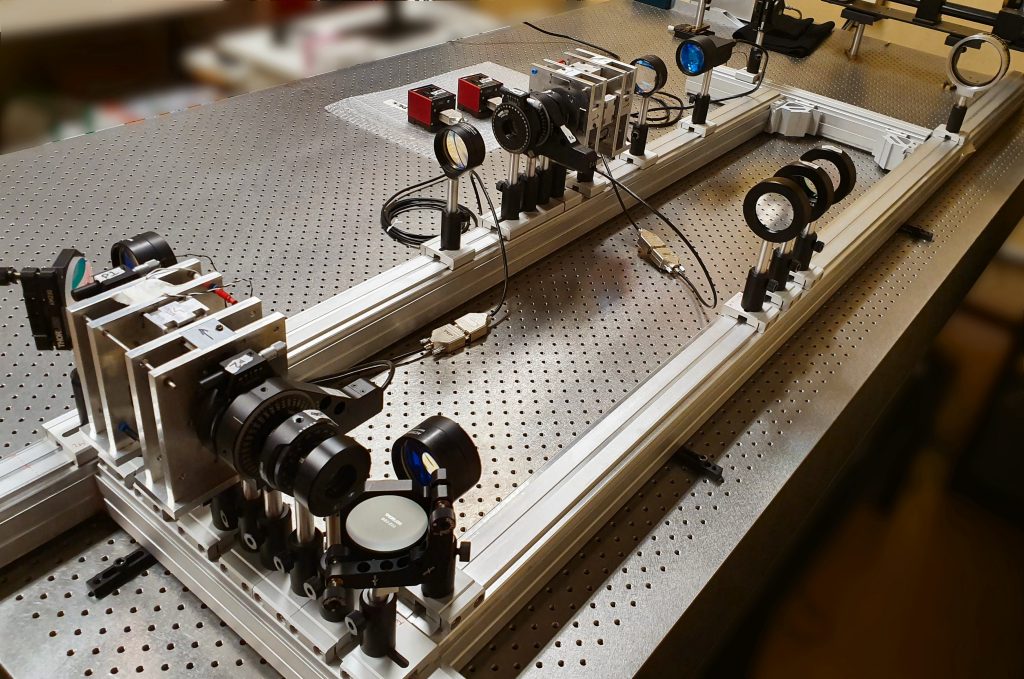
Ground-based networks of solar synoptic telescopes are a powerful tool for characterizing the activity status of our star and detecting/forecasting the sources of Space Weather events.
The use of a network of fully-robotic compact synoptic telescopes represents a low-cost and high-efficiency support to Space Weather (SWe) services and a valuable complement to solar space missions (e.g., Solar Orbiter or Parker Solar Probe), and context imaging for next-generation 4-m class groundbased solar telescopes (DKIST and EST).
The Tor Vergata Synoptic Solar Telescope (TSST) is a compact and robotic multi-channel instrument designed to be compliant to the main objectives described in the framework of the SPRING project, developed under the H2020-SOLARNET program funded by the European Union, and focused on a preliminary design study of a synoptic solar observing facility. The TSST is currently composed of two main full-disk instruments, a Ha telescope and a Potassium (KI D1) magneto-optical filter (MOF) -based telescope operating at 769.9 nm. TSST is designed to be later upgraded with a second MOF channel.
The TSST project derives from a long-standing collaboration among Tor Vergata University and the MOTH and VAMOS teams that dates back to 2011 and includes the joint effort for the MOTH campaigns at the South Pole Solar Observatory. The TSST is therefore an international effort involving The University of Rome Tor Vergata, The University of L’Aquila, INAF, INFN, Georgia State University and NASA JPL. The PI of the project is Dr Luca Giovannelli (UNITOV).
The TSST has been described in a series of recent papers:
- “The Tor Vergata Synoptic Solar Telescope (TSST): A robotic, compact facility for solar full disk imaging” (Giovannelli+ 2020), describes the TSST concepts, its design, the assembly phase and presents the first light observation carried out in February 2020. https://doi.org/10.1051/swsc/2020061
- “Data reduction pipeline for MOF-based synoptic telescopes” (Forte+ 2020) describes the pipeline for the synoptic telescopes based on Magneto Optical Filters (MOF) that use different lines to measure the line-of-sight Doppler velocity and magnetic field over the full solar disk at different ranges of height in the Sun’s photosphere and low chromosphere. https://doi.org/10.1051/swsc/2020065
- “Tor Vergata Synoptic Solar Telescope: spectral characterization of potassium KI D1 MOFs” (Calchetti+ 2020) presents the optical setup and spectral characterization of the MOF-based telescope together with details on the spectral characterization of the MOFs cells which is a required test to obtain calibrated magnetograms and dopplergrams. https://doi.org/10.1117/12.2562454
- “Optical design of the Tor Vergata Synoptic Solar Telescope (TSST)” (Viavattene+ 2020) presents an overview on the TSST and the optical design and characteristics of the MOF-based telescope, whose optical scheme is a double-Keplerian 80mm refractor with an aberration-free imaging lens. http://dx.doi.org/10.1393/ncc/i2020-20120-6
- “Tor vergata Synoptic Solar Telescope: preliminary optical design and spectral characterization” (Calchetti+ 2020) presents the details on the preliminary spectral characterization of this instrument at different cell temperatures. https://doi.org/10.1088/1742-6596/1548/1/012005



